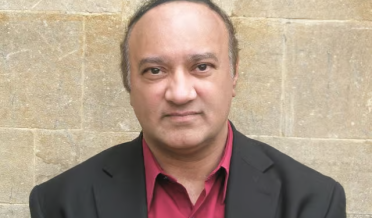Report:
Shahid Iqbal Kharal
Gibraltar is a British Overseas Territory since more than 300 years and headland, on Spain’s south coast. It’s dominated by the Rock of Gibraltar. First settled by the Moors in the Middle Ages and later ruled by Spain, the outpost was ceded to the British in 1713. Layers of fortification included the remains of a 14th century Moorish castle and the 18th century Great Siege Tunnels, which were expended in World War two.
Gibraltar is located at the southern tip of the Iberian Peninsula. It has an area of 2.6 sq mile and is bordered to the north by Spain. The landscape is dominated by the Rock of Gibraltar, at the foot of which is a densely populated town area, home to over 32,000 people, primarily Gibraltarians.

In 1704, Anglo-Dutch forces captured Gibraltar from Spain during the War of the Spanish Succession. The territory was ceded to Great Britain in perpetuity under the Treaty of Utrecht in 1713. It became an important base for the Royal Navy, particularly during the Napoleonic Wars and World War II, as it controlled the narrow entrance and exit to the Mediterranean Sea, the Strait of Gibraltar, which is only 14.3 km (8.9 mi) wide. This choke point remains strategically important, with half the world’s seaborne trade passing through it. Gibraltar’s economy is based largely on tourism, online gambling, financial services, and bunkering. The sovereignty of Gibraltar is a point of contention in Anglo-Spanish relations, as Spain asserts a claim to the territory. Gibraltarians overwhelmingly rejected proposals for Spanish sovereignty in a 1967 referendum, and for shared sovereignty in a 2002 referendum. Nevertheless, Gibraltar maintains close economic and cultural links with Spain, with many Gibraltarians speaking Spanish as well as a local dialect known as Llanito.

On 31 January 2020, the UK and Gibraltar left the European Union. In December 2020, the UK and Spain agreed in principle to a basis on which the UK and the EU might negotiate terms for Gibraltar to participate in aspects of the Schengen Agreement.
After the collapse of the Western Roman Empire, Gibraltar came briefly under the control of the Vandals, who crossed into Africa at the invitation of Boniface, the Count (or commander) of the territory. The area later formed part of the Visigothic Kingdom of Hispania for almost 300 years, from 414 until 711 AD.
Following a raid in 710, a predominantly Berber army under the command of Tariq ibn Ziyad crossed from North Africa in April 711 and landed somewhere in the vicinity of Gibraltar (though most likely not in the bay or at the Rock itself). Tariq’s expedition led to the Islamic conquest of most of the Iberian Peninsula. Mons Calpe was renamed Jabal Ṭāriq (جبل طارق), “the Mount of Tariq”, subsequently corrupted into Gibraltar.
In 1160 the Almohad Sultan Abd al-Mu’min ordered that a permanent settlement, including a castle, be built. It received the name of Medinat al-Fath (City of the Victory). The Tower of Homage of the Moorish Castle remains standing today.
Tariq ibn Ziyad was the Great Muslim Leader and conqueror of Al – Andalus (Iberian Peninsula – modern Spain and Portugal), which became one of the greatest conquests in Islamic history. He was one of the most important military commanders in Iberian history and was born in the Berber tribe of Algeria/ tribe of Nafzaw. As Berber, he belonged to North African nomads who converted to Islam and fought with great ferocity for the spreading of the religion. Tariq was still a teenager when he joined the Muslim army (Umayyad Caliphate) in North Africa. Despite his young age, he showed great courage and enthusiasm for his faith. When he was between 19 and 23 years old he won the trust of the General, Musa ibn Nusair (the Umayyad governor of Ifriqiya) who appointed him Governor of Tangier at the behest of Khalifa of the time, Walid ibn ‘Abd al-Malik. He tasked his courageous young Commander, Tariq ibn Ziyad, to head an army of 7,000 men (12,000 in other accounts).

Early History of Iberia
In Iberian Penisnula the Visigoths (the Goths) had been in power since the early fifth century and were successors of the Western Roman empire. They, like other groups who swept over the Roman empire in the 5th century, are known to history as barbarians, because that is what the Romans called them. The Goths subscribed to Arianism and became Catholics in the late sixth century during the reign of King Reccared (586–601).
In the early 700s, Iberia was controlled by a Visigothic king, Roderic, who was seen as a tyrant by his people. He is well-known as “the last king of the Goths”. It was in this period that the Christian Governor of Cueta, near Tangier, Julian, called upon the Muslims in North Africa for help in the civil war, and they quickly responded to this request to conquer Iberia for themselves. The Visigoth King Rodric was defeated by Tariq ibn Ziyad, and the Iberian Peninsula was conquered in its entirety except for Galicia in the north and Catalonia in the northeast.
The Umayyad conquest of Visigothic Hispania, the initial expansion of the Umayyad Caliphate over a large section of the Iberian Peninsula, took from 711 to 788. The conquest resulted in the destruction of the Visigoth kingdom and the establishment of the independent Emirate of Córdoba under Abd ar-Rahman I, who completed the unification of Muslim-ruled Iberia, or al-Andalus.

Fatih Al Andalus
A small Muslim army (Moors/Berbers) arrived on the southern shores of Iberia in the year 711 and by 720, almost the entire peninsula was under Muslim control. The Moors first settled on the peninsula in the Middle Ages; it was April 27, 711 when Tariq ibn-Ziyad, the Berber general from North Africa, landed on the shores of Gibraltar. It is said that he saw the Holy Prophet (peace be upon him) in his dream who saying: “Take courage, O Tariq! And accomplish what you are destined to perform.” Then he saw the Messenger of Allah (peace be upon him) and his companions entering Andalus.” Tariq awoke with a smile, and from that moment, he never doubted his victory.
He led a small force from Morocco in 711 AD and landed on the high rock which is called Jabal-Al-Tariq-‘ Mountain of Tariq’ (Gibralter). That was the first spot that Tariq and his army landed on. It was here that the young, charismatic general gave one of the most famous military speeches, known as the ‘Khutbah (sermon) of Tariq’, which was as follows: “O my warriors, where will you flee? Behind you is the sea, before you, the enemy. By Allah! There is no salvation for you but in your courage and perseverance…”
The army responded to Tariq’s battle speech by bursting with great enthusiasm to meet the enemy. Julian and men loyal to him acted as guides through the land for the Muslims and also ensured that the people were informed that Muslims had come to liberate them from Visigoth tyranny. For the Spanish population of Jews in particular, the Muslims were seen as saviours and the Jews had in fact fought alongside them.
Battle de Guadalete – 8 days battle
It is worth mentioning that this military commander led the Islamic first armies to the Iberian Peninsula and led a remarkable victory in the battle of the Valley lakh, and on his hands opened Al-Andalus. When Tariq bin Ziyad found the Muslim ranks a bit nervous in the face of the large enemy in front of them, he ordered the ships to be burned and then delivered the historic and stirring address to the Mujahedeen. The two armies met at the battlefield of Guadalete where King Roderic was defeated and killed on Ramadan 28, 92 AH. Tariq marched straight on to Toledo- the capital of Visigoth, and most of Spain capitulated (Cordoba, Granada, Malaga…). King Roderic’s rule came to an end in Spain.
Upon hearing the grand victory, Commander Musa bin Nusair rushed to Spain with another large force of 18,000. The two generals occupied more than two-thirds of the Iberian Peninsula In rapid succession, Saragossa, Barcelona and Portugal fell one after another.
End of Tariq ibn Ziyad
Just as the conquest and liberation of Spain was near complete, he and Musa received some news. Caliph Walid bin Abdul Malik invited Musa bin Nusair and Tariq bin Ziyad to Damascus. But when they reached the capital, the caliph was on death bed. He honored them lavishly but he passed away soon. Caliph Sulaiman succeeded him in Feb. 715, and he turned against the two commanders and deprived them of all amenities. Tariq died in Damascus in 720 in anonymity. Caliph Sulaiman was a vengeful ruler, and from here on, the hero of the hour, Tariq Ibn Ziyad fades into the background and we hear nothing further of him.
CONCLUSION
As result of Muslim rule, Spain became a beacon of art, science and culture for Europe. The Muslims founded new cities as well as developing the existing ones. Prominent among those they developed are Toledo, Valencia and Sevilla. Agriculture and architecture flourished under the Muslims. The religious minorities, the Jews and the Christians, received the protection of the state and were allowed participation at the highest levels of the government.
A Berber army lead by Tariq ibn Ziyad under Arab leadership crossed the Straits of Gibraltar from Morocco for yet more raids on the last of the Visigothic kingdoms in Spain. And so began a 700-year presence of Islam in Europe. The Caliphate of Cordoba grew and flourished, and throughout the 10th century al-Andalus (Andalusia) was the richest, the best-governed, the most powerful, and the most renowned state in the western world – called “the ornament of the world”.







